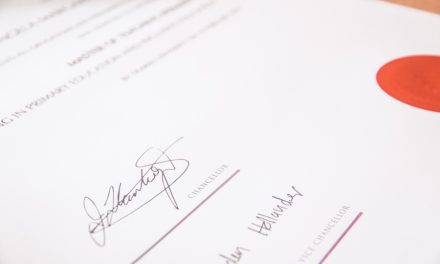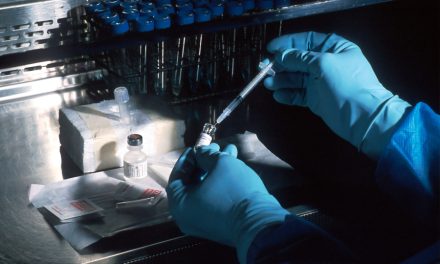DNA testing has revolutionised genealogy research, providing adoptees and others with unknown lineages a powerful tool to uncover their biological roots. With the help of DNA testing, it is now possible to connect adoptees with biological relatives, build family trees, and discover ethnic origins.
However, with so many types of tests and companies to choose from, navigating the world of DNA testing can be overwhelming. In this article, we will explore how to use DNA testing for adoptees, including the different types of tests available, how to choose a testing company and test type, and how to interpret and use your results. Whether you are an adoptee searching for birth parents, or simply curious about your ancestry, this guide will help you get started on your DNA testing journey.
Table of Contents
Understanding DNA Testing for Genealogy Research
DNA testing for genealogy research involves using a person’s genetic material to uncover their ancestry and potential biological relatives. To understand how DNA testing works, it’s helpful to know that DNA is a long molecule that contains the genetic instructions for building and maintaining an organism. Humans have 23 pairs of chromosomes, which contain DNA segments that are passed down from their biological parents.
DNA testing companies analyse a person’s DNA using different types of tests, including autosomal, Y-DNA, and mtDNA tests. Autosomal tests look at both maternal and paternal DNA and can be used to identify relatives up to several generations back. Y-DNA tests focus on the DNA passed down exclusively through the male line, while mtDNA tests analyse the DNA passed down exclusively through the female line.
Once a DNA sample has been analysed, testing companies provide a list of DNA matches – other individuals who share segments of DNA with the test-taker. By comparing family trees and other information, it’s possible to determine how the DNA matches are related and potentially uncover new branches of the family tree.
Understanding DNA testing and its various applications is an important first step in using this tool for genealogy research. By knowing how DNA testing works, you can make informed decisions about which tests to take and which companies to use, and interpret your results more effectively.
Types of DNA Tests for Genealogy and Their Differences
There are three main types of DNA tests used for genealogy research: autosomal DNA, Y-DNA, and mtDNA. Each test offers different information and can be useful for different genealogical purposes.
Autosomal DNA testing is the most popular type of DNA test for genealogy research. It analyzes the DNA that is inherited from both parents and can help identify relatives on both the maternal and paternal sides of a person’s family tree. Autosomal tests are useful for finding cousins, second cousins, and more distant relatives, and can provide information on ethnicity estimates as well.
Y-DNA testing focuses on the DNA passed down exclusively through the male line. It is useful for tracing paternal ancestry and can provide information on surname origins and ancient ancestry. Y-DNA testing can be particularly helpful for adoptees looking to identify their biological father or for those researching a specific paternal line.
mtDNA testing analyzes the DNA passed down exclusively through the maternal line. It can be used to trace maternal ancestry and provide information on ancient ancestry. mtDNA testing can be helpful for adoptees searching for their biological mother or for those looking to trace a specific maternal line.
Understanding the differences between the types of DNA tests available for genealogy research is important for choosing the right test for your research goals. While each test offers unique information, autosomal testing is the most versatile and commonly used for genealogy research.
Choosing a DNA Testing Company and Test Type
Choosing a DNA testing company and test type is an important step in using DNA testing for genealogy research. With so many options available, it can be overwhelming to decide which company and test to use.
The first step is to research the different DNA testing companies and the tests they offer. Some of the most popular companies include AncestryDNA, 23andMe, and MyHeritage DNA, but there are many others as well. Each company has its own database of DNA matches, and some may offer additional features such as family tree-building tools or access to historical records.
The next step is to decide which type of DNA test is best suited for your research goals. As mentioned earlier, autosomal DNA testing is the most versatile and commonly used for genealogy research. However, Y-DNA and mtDNA tests can be useful for specific research goals as well.
Once you have decided on a company and test type, it’s important to read the terms and conditions carefully, especially regarding data privacy and consent. DNA testing involves sharing personal genetic information, so it’s important to understand how the company handles this information and what control you have over it.
Choosing a DNA testing company and test type requires careful consideration of your research goals and preferences, as well as a thorough understanding of the company’s policies and procedures. By taking the time to make an informed decision, you can increase the likelihood of finding valuable information and making meaningful connections through DNA testing.
Interpreting DNA Test Results and Understanding Ethnicity Estimates
Interpreting DNA test results can be complex, but understanding the basics can provide valuable insights into your family history and ancestry. One of the most important aspects of DNA test results is the ethnicity estimate, which provides an estimate of the regions and populations where your ancestors may have originated.
It’s important to understand that ethnicity estimates are just that – estimates. They are based on statistical models and algorithms that compare your DNA to reference populations from around the world. While ethnicity estimates can be a useful starting point for exploring your ancestry, they should be interpreted with caution and in the context of other genealogical evidence.
In addition to ethnicity estimates, DNA test results can also provide information on genetic matches and shared segments of DNA. These matches can help identify relatives and build family trees, but it’s important to verify the relationships through traditional genealogical research as well.
Interpreting DNA test results also involves understanding the different types of DNA and their inheritance patterns. For example, autosomal DNA is inherited from both parents and can provide information on relatives from multiple generations, while Y-DNA is inherited exclusively from the father and can provide information on paternal ancestry.
Overall, interpreting DNA test results requires a combination of scientific knowledge, genealogical research, and critical thinking. By understanding the limitations and potential of DNA testing, as well as the broader context of your family history, you can gain a deeper understanding of your ancestry and heritage.
Using DNA Matches to Build a Family Tree
Using DNA matches to build a family tree can be a powerful tool for genealogical research. DNA matches occur when two individuals share a significant amount of DNA, indicating that they are likely to be related. By using DNA matches in combination with traditional genealogical research, it’s possible to build a more complete and accurate family tree.
Here are some general steps to follow when using DNA matches to build a family tree:
- Identify your DNA matches. This can be done through the DNA testing company’s website, which should provide a list of matches ranked by the amount of shared DNA.
- Analyse your DNA matches. Look for patterns and commonalities among your matches, such as shared surnames or geographic locations. This can help identify potential branches of your family tree to explore.
- Build out your family tree. Using the information from your DNA matches and traditional genealogical research, start building out your family tree. This may involve tracing back multiple generations and verifying relationships through additional sources, such as census records, wills, and other historical documents.
- Use DNA matches to confirm or refute relationships. DNA matches can be a powerful tool for verifying relationships that may be uncertain or unknown. For example, if you have a DNA match that you believe may be a cousin, you can use additional research and DNA evidence to confirm or refute the relationship.
- Stay organised. Building a family tree using DNA matches can be a complex and time-consuming process, so it’s important to stay organised and keep track of your research and findings.
By using DNA matches to build a family tree, you can gain a deeper understanding of your family history and ancestry. While it requires patience and persistence, the insights gained from this process can be well worth the effort.
Contacting DNA Matches and Conducting Collaborative Research
Contacting DNA matches and conducting collaborative research can be a valuable part of the DNA testing process, especially for adoptees and others with unknown lineages. By reaching out to DNA matches and working together, it’s possible to uncover new information and build a more complete family tree.
Here are some general steps to follow when contacting DNA matches and conducting collaborative research:
- Reach out to your DNA matches. Depending on the DNA testing company, you may be able to contact your matches through the company’s website. It’s important to be respectful and courteous in your initial message and to explain your goals and interests in collaborating.
- Share information and research. Once you’ve established contact with a DNA match, it’s important to share information and research. This can include sharing family trees, documents, and other sources of information that can help build a more complete picture of your family history.
- Verify relationships through additional evidence. While DNA matches can provide valuable clues and insights, it’s important to verify relationships through additional evidence, such as census records, wills, and other historical documents. Collaborating with DNA matches can help identify additional sources of evidence and provide a more complete picture of your family history.
- Respect privacy and boundaries. It’s important to respect the privacy and boundaries of your DNA matches. Some individuals may not be interested in collaborating or sharing information, and it’s important to honour their wishes.
- Stay organised. Collaborating with DNA matches can be a complex and time-consuming process, so it’s important to stay organised and keep track of your research and findings.
Case Studies: Real-Life Examples of DNA Testing for Adoptees and Others with Unknown Lineages
In recent years, many heartwarming stories have emerged of individuals who were able to connect with biological relatives through DNA testing. Here are a few examples of real-life cases where DNA testing helped adoptees and others find their biological families.
One such case involves a woman named CeCe Moore, who was adopted as a baby and spent years searching for her biological parents. Moore eventually turned to DNA testing and was able to track down her birth mother. This led to a reunion with her biological family, including a half-sister and half-brother. Moore now works as a genetic genealogist and helps others use DNA testing to find their biological families.
In another case, a woman named Lisa Wingate wrote a novel called “Before We Were Yours,” which was based on the true story of the Tennessee Children’s Home Society. The home was a notorious orphanage where children were taken from their birth families and sold to wealthy families. One of the children who was taken from her family was a woman named Judy Christie. Christie was able to use DNA testing to track down her biological family and discover the truth about her past.
Yet another case involves a man named Jim Mickelson, who was adopted as a baby in Minnesota. After years of searching, Mickelson used DNA testing to connect with his biological family in Ireland. He discovered that he had two half-brothers and was able to meet them in person. Mickelson said that the experience was life-changing and that he finally felt a sense of belonging.
These stories are just a few examples of the many adoptees and others who have been able to use DNA testing to uncover their biological roots. Thanks to advances in technology, it’s now easier than ever to connect with long-lost family members and learn more about our ancestry.
Conclusion
In conclusion, DNA testing can be a powerful tool for adoptees and others with unknown lineages to learn more about their biological families and build new relationships. By choosing the right DNA testing company and test type, collecting and submitting a DNA sample, interpreting test results, and contacting DNA matches, individuals can unlock the mysteries of their family history and make meaningful connections with their biological relatives. The case studies presented also illustrate the real-life impact of DNA testing, showcasing the potential for it to bring adoptees back together with biological family and provide a sense of identity and belonging. With advances in technology and increasing popularity of DNA testing, the possibilities for discovering one’s roots are constantly expanding.




